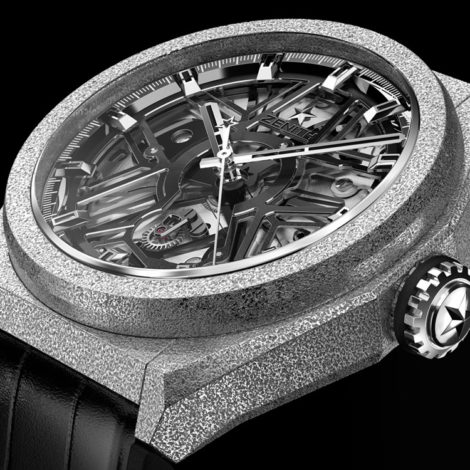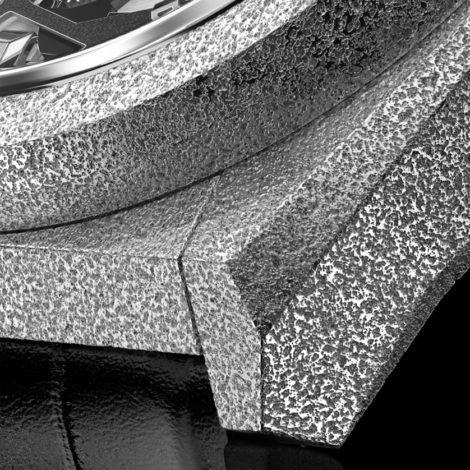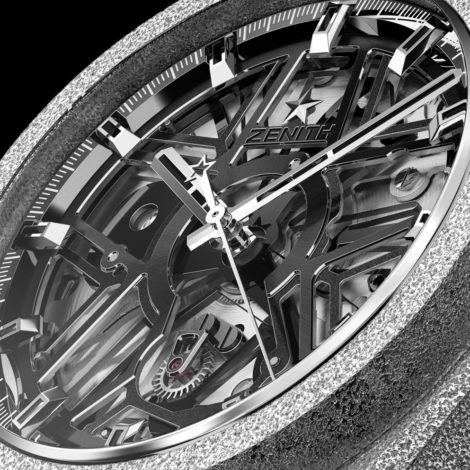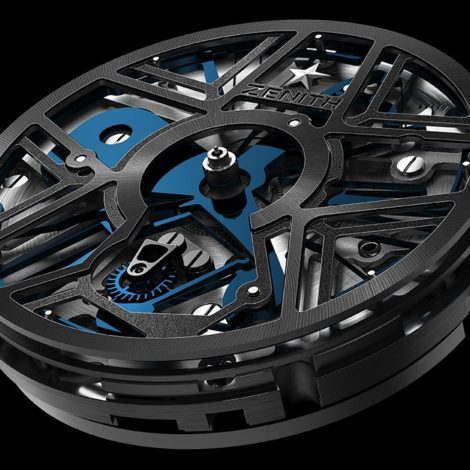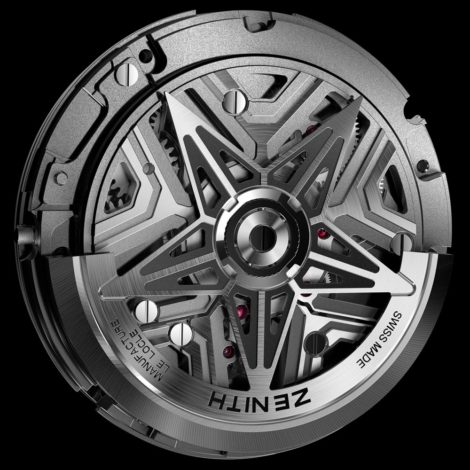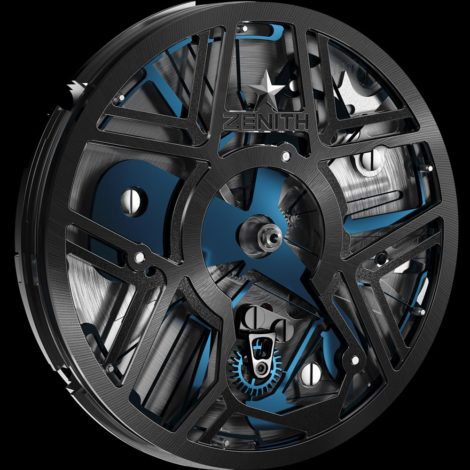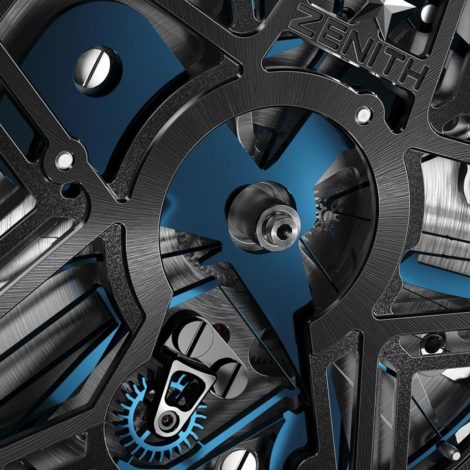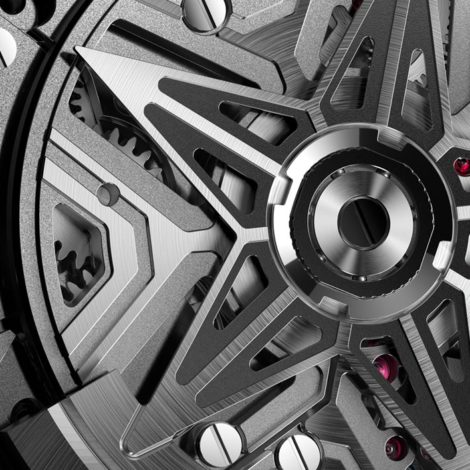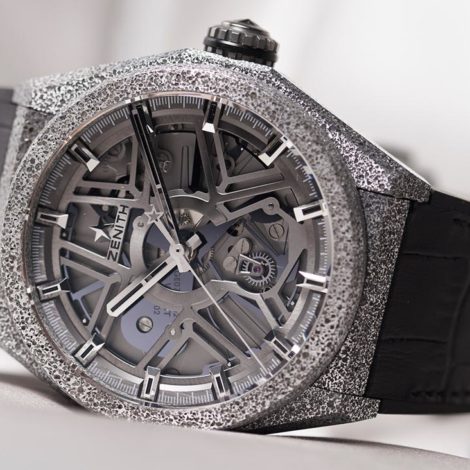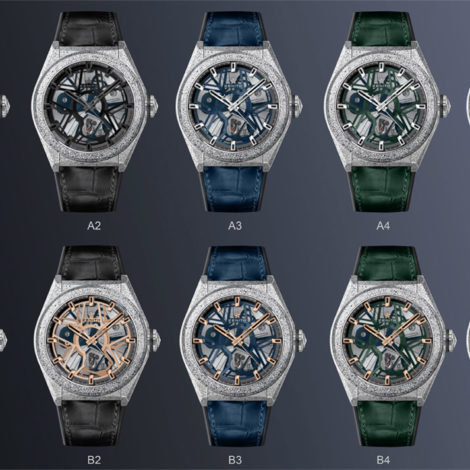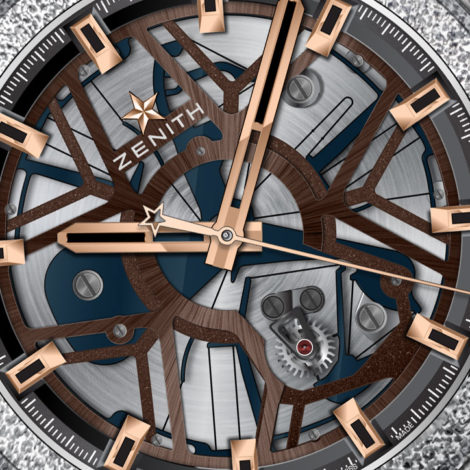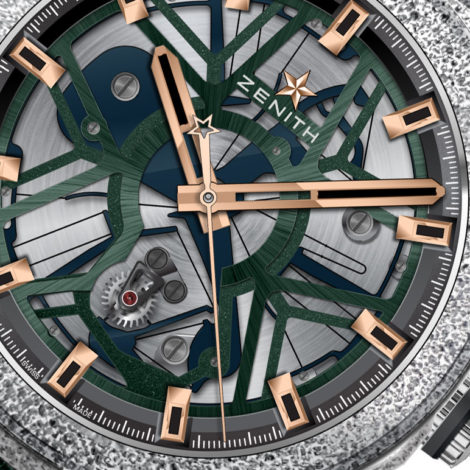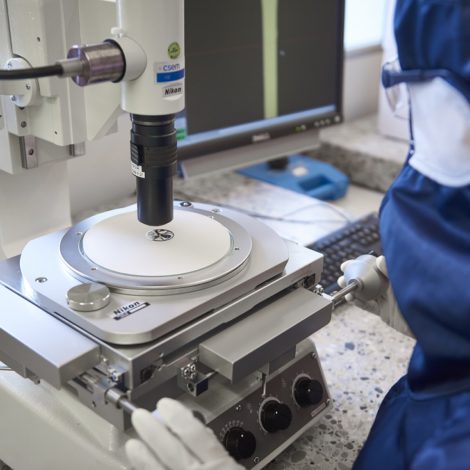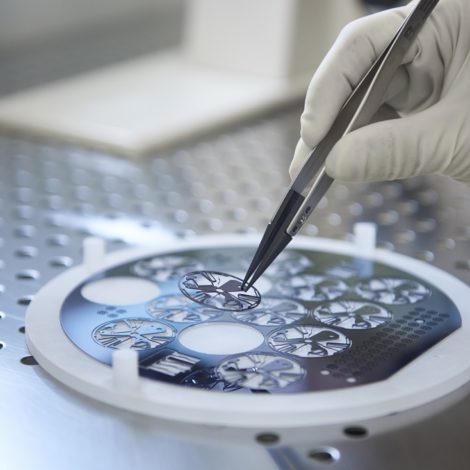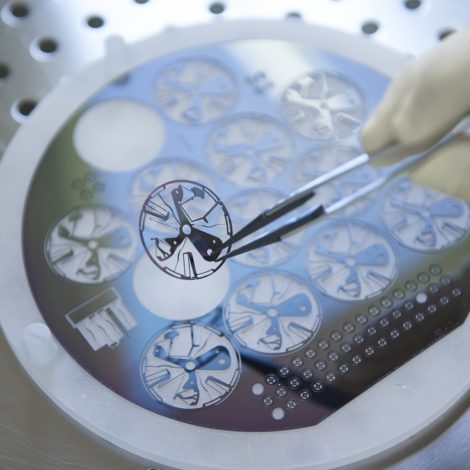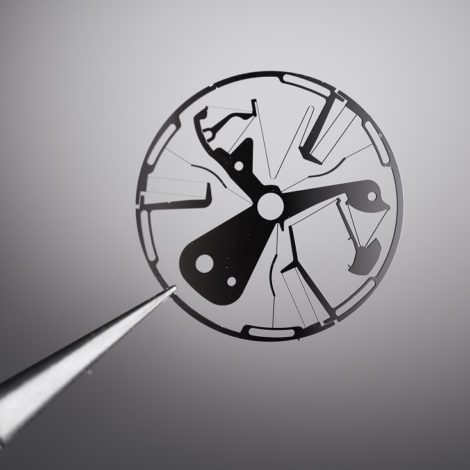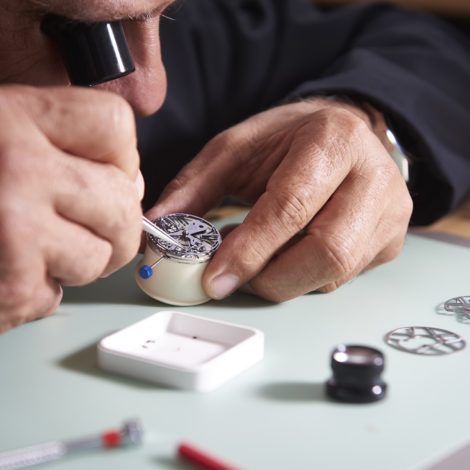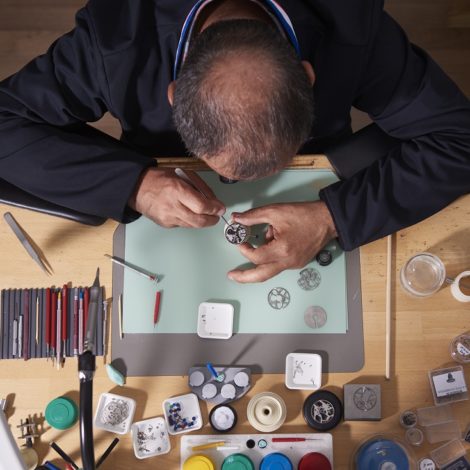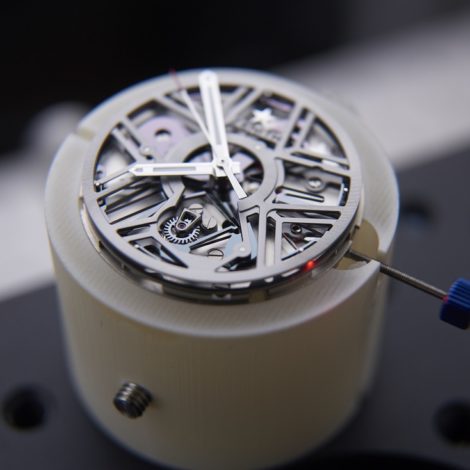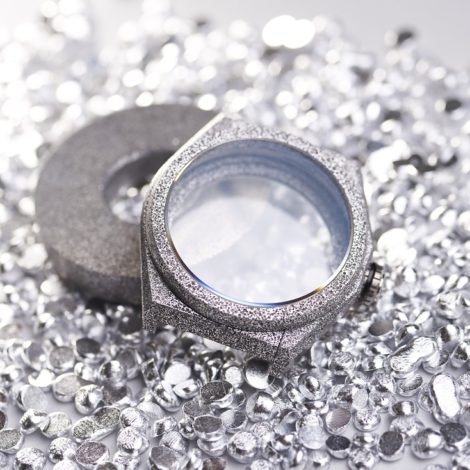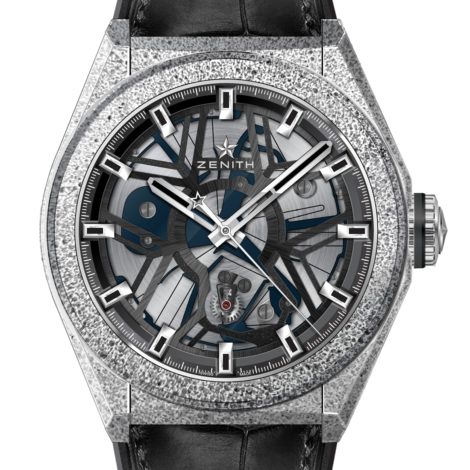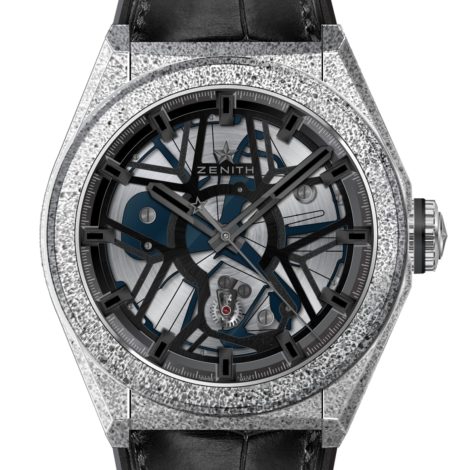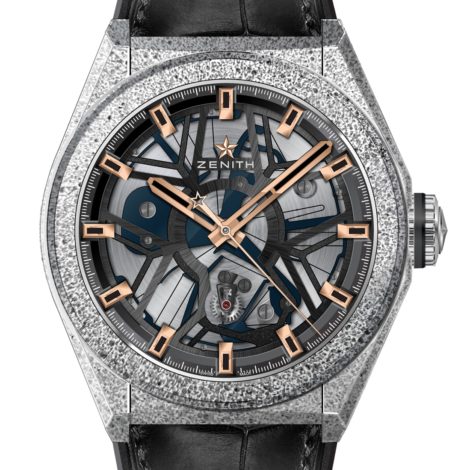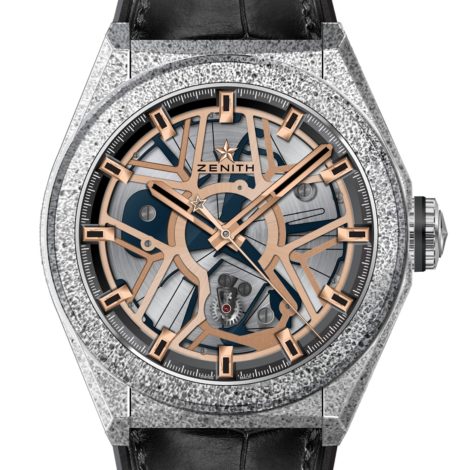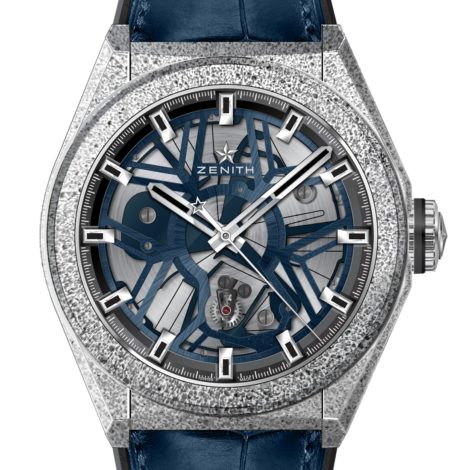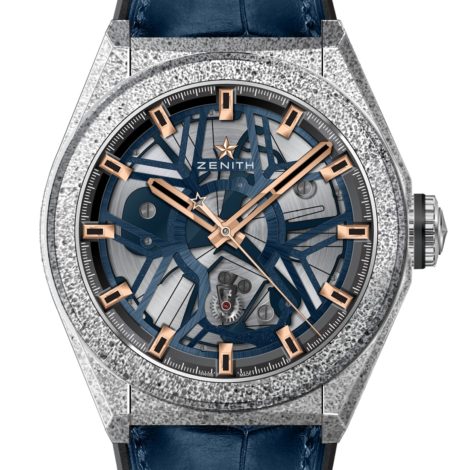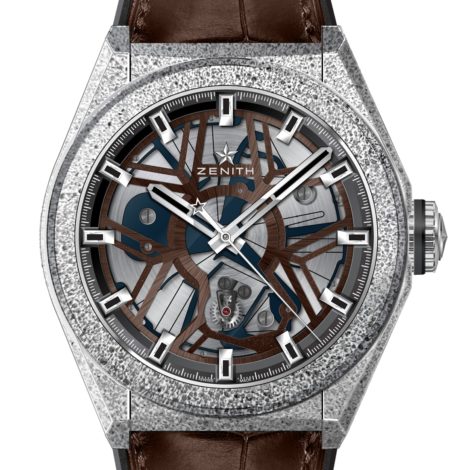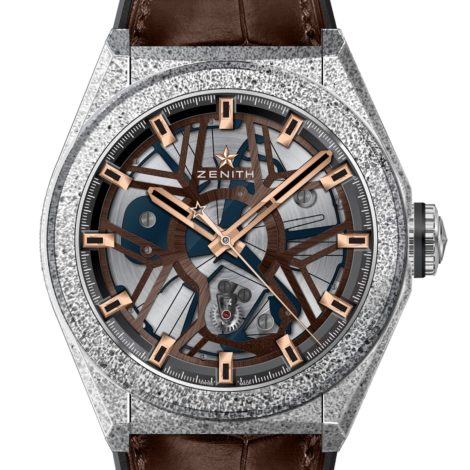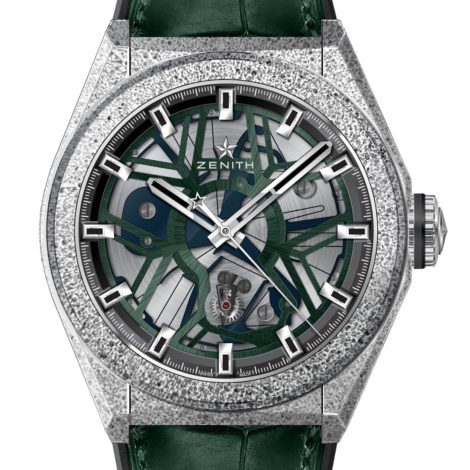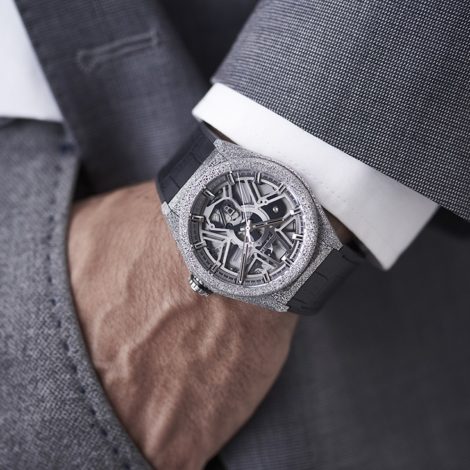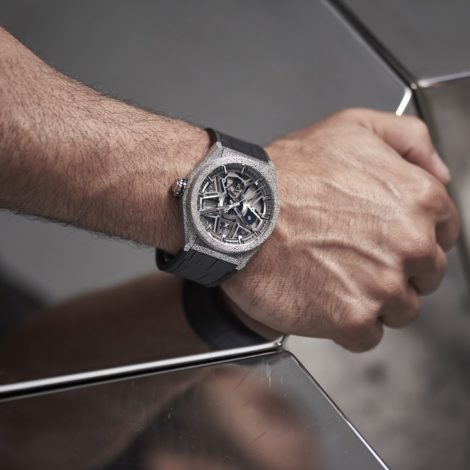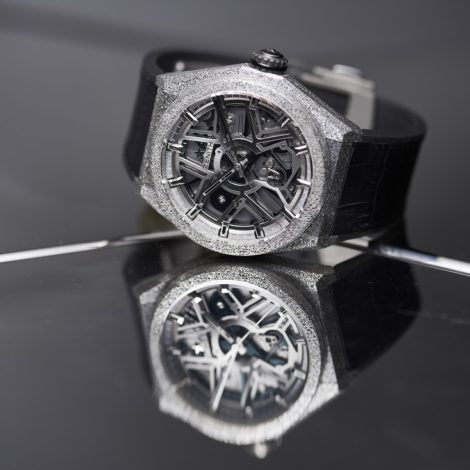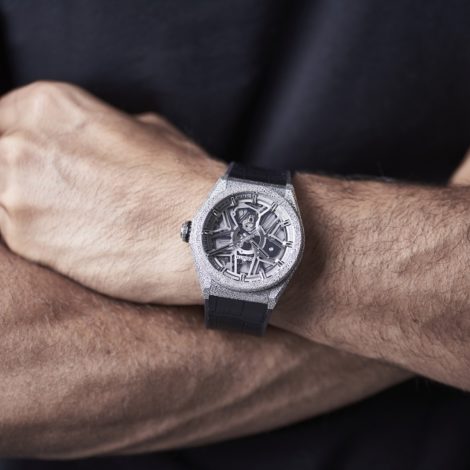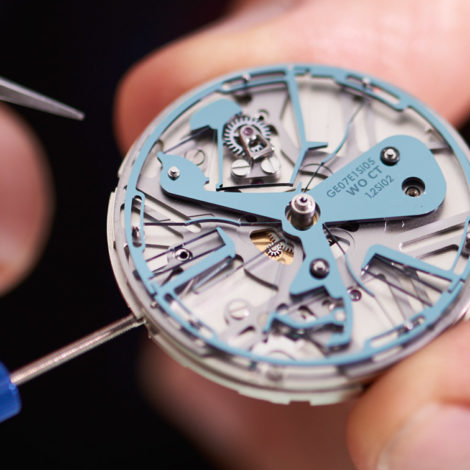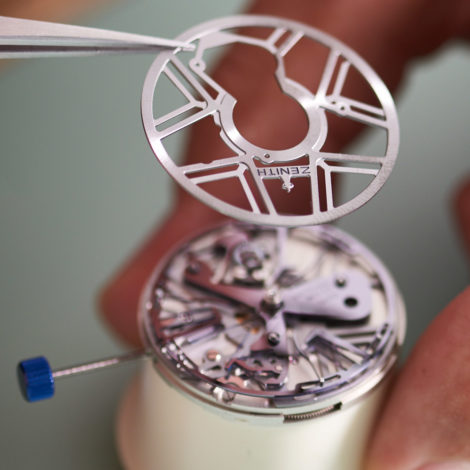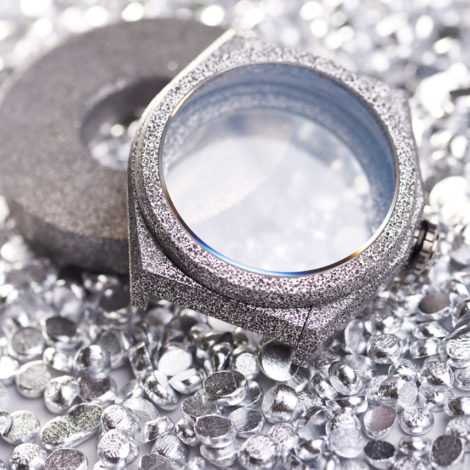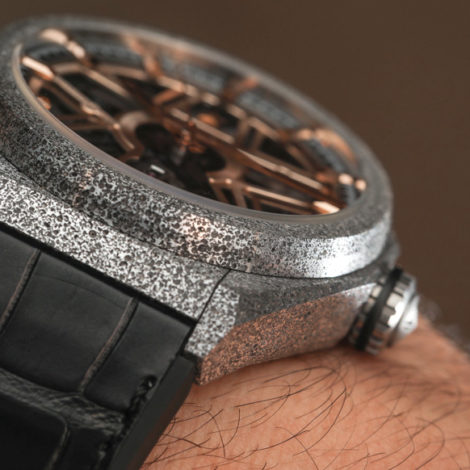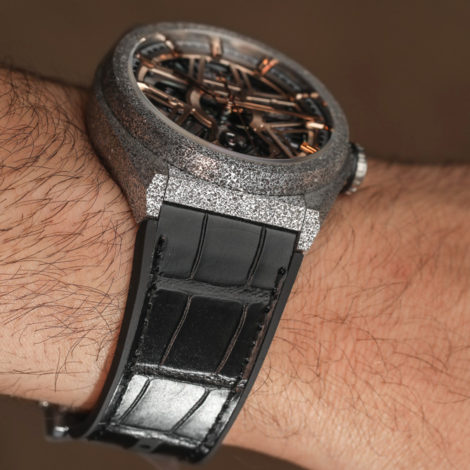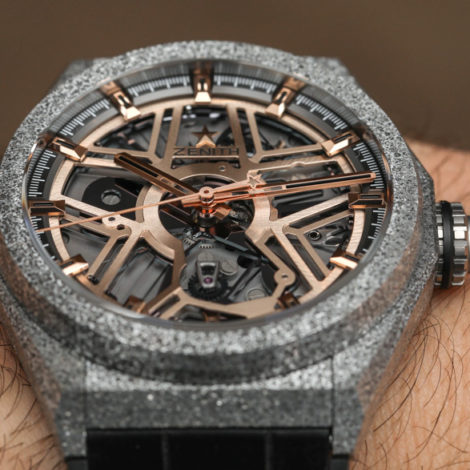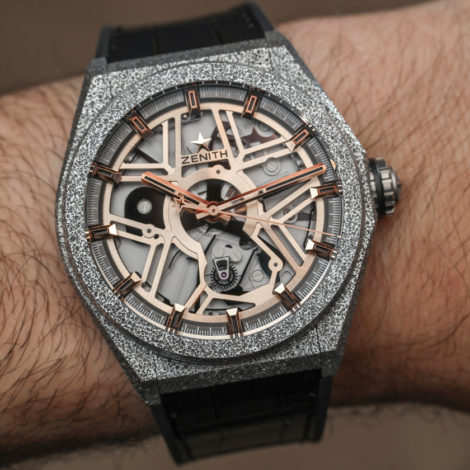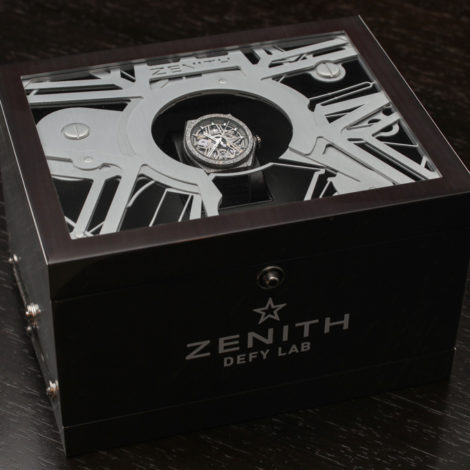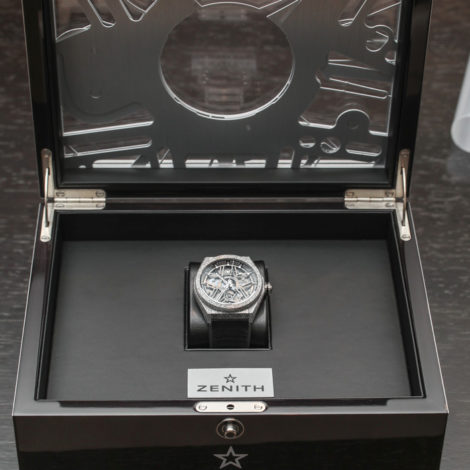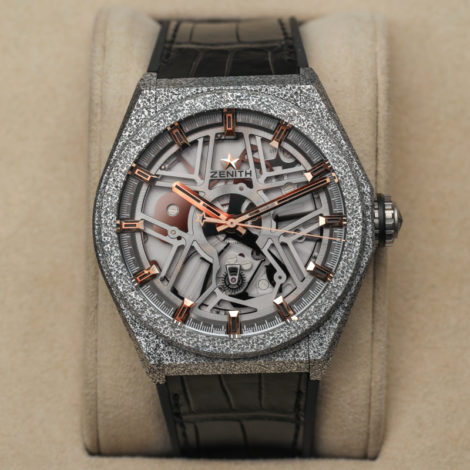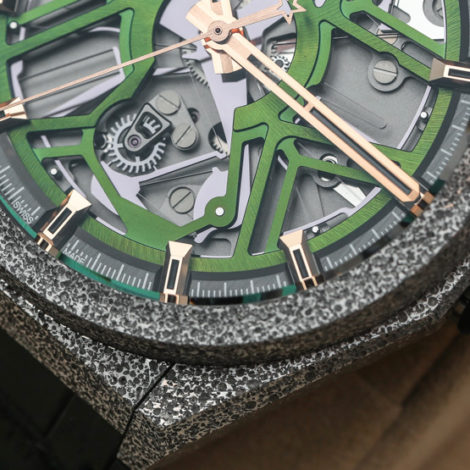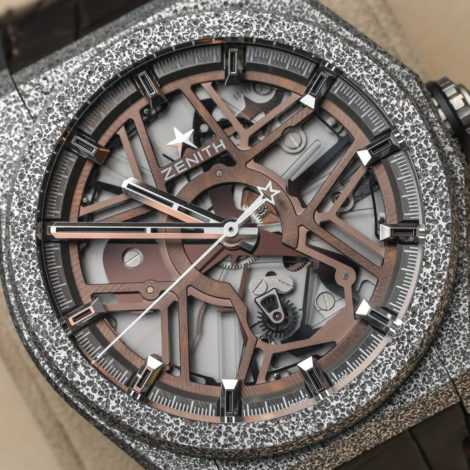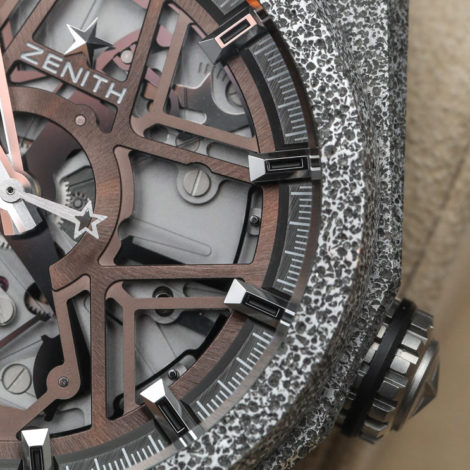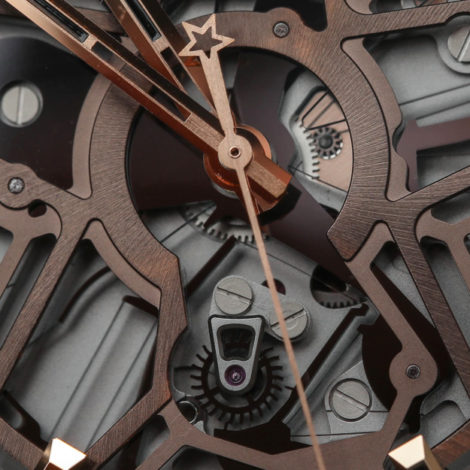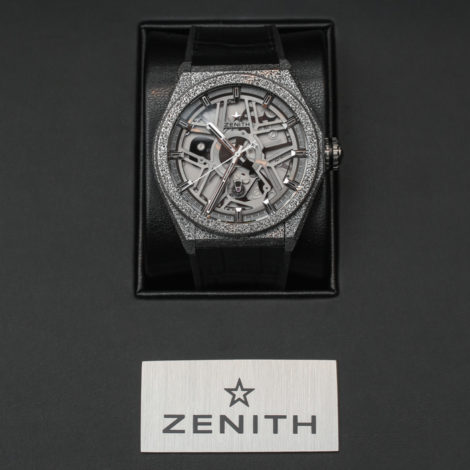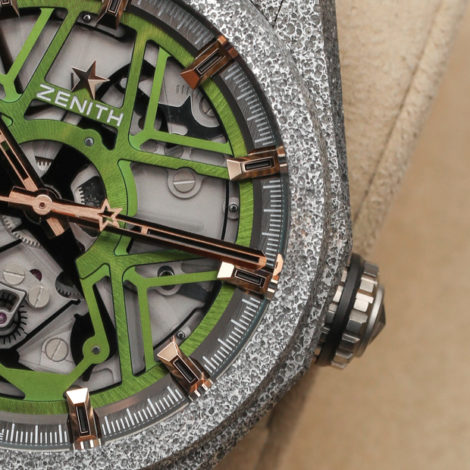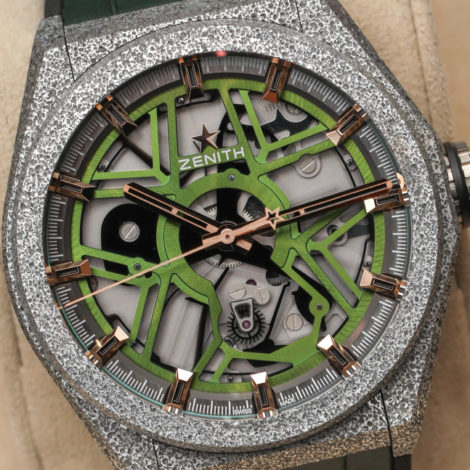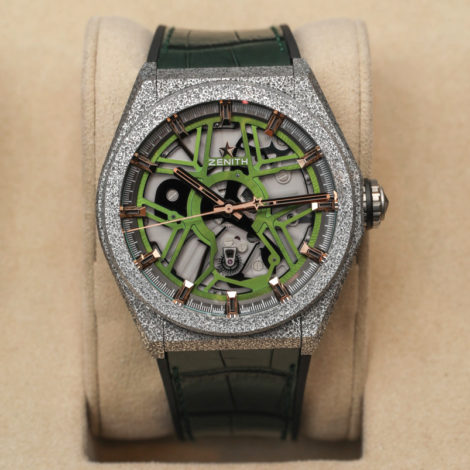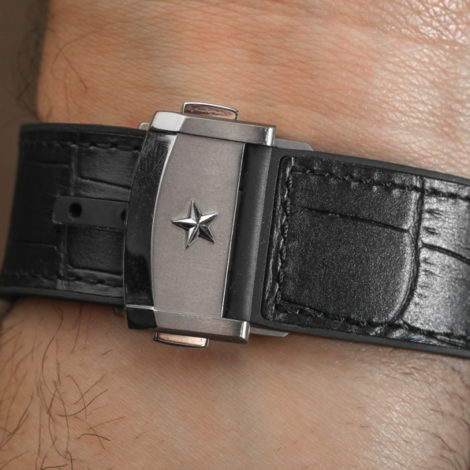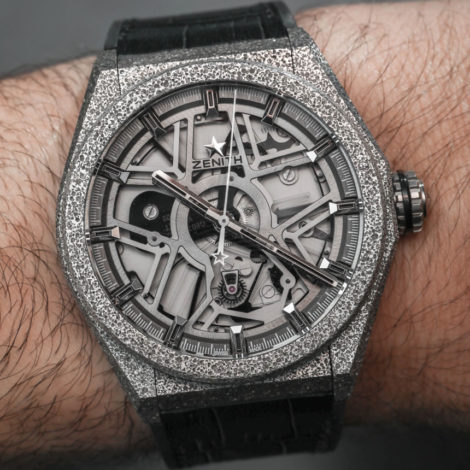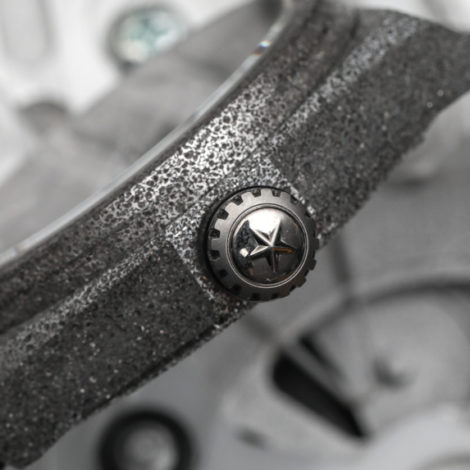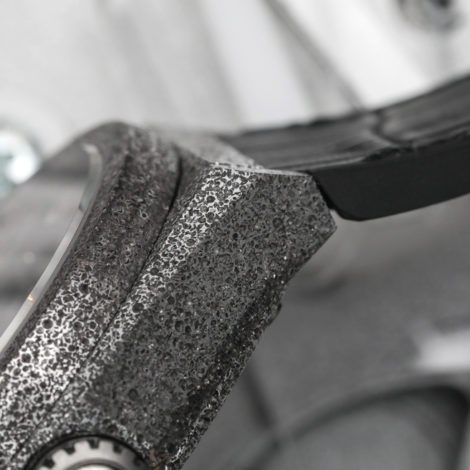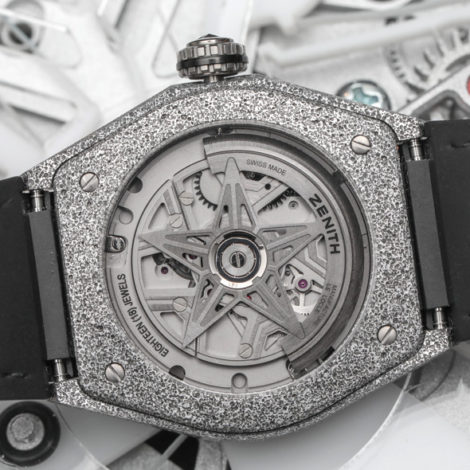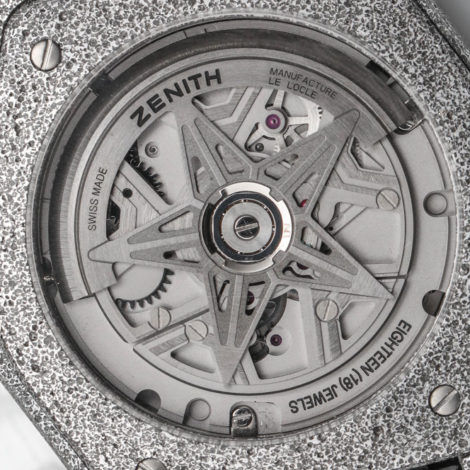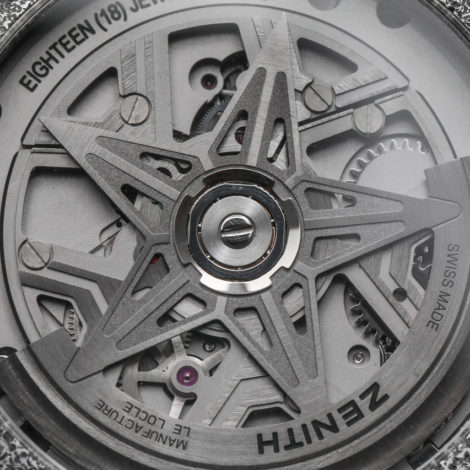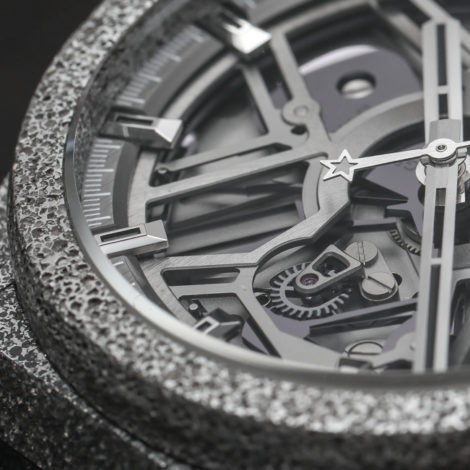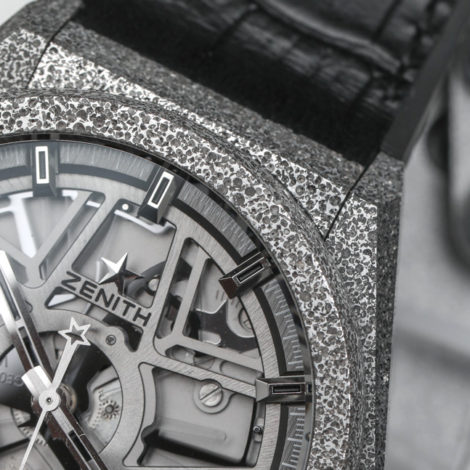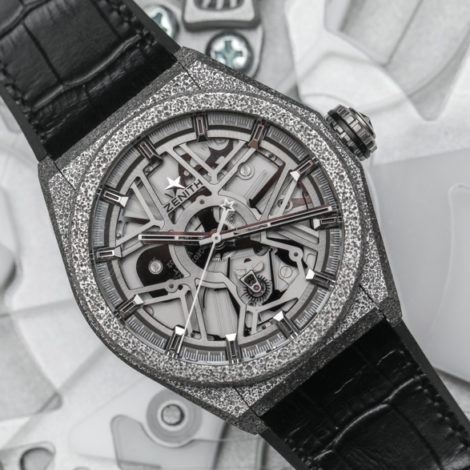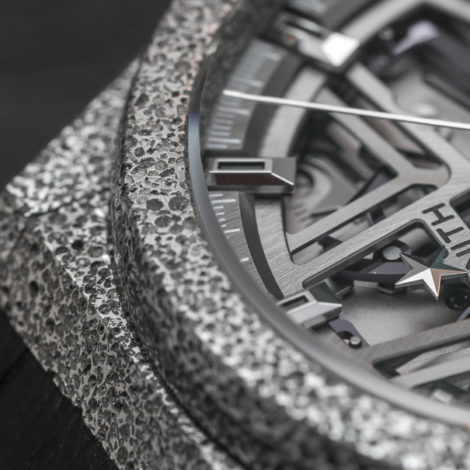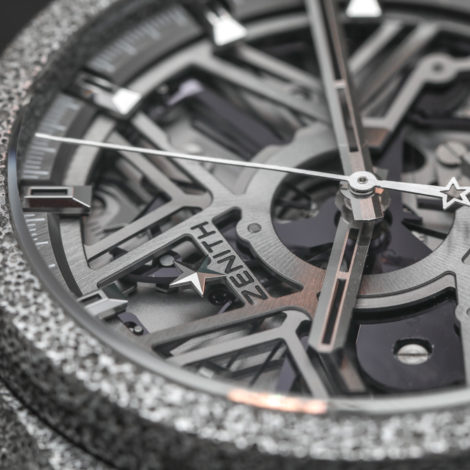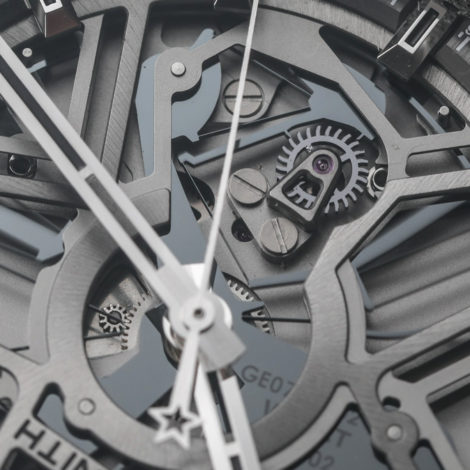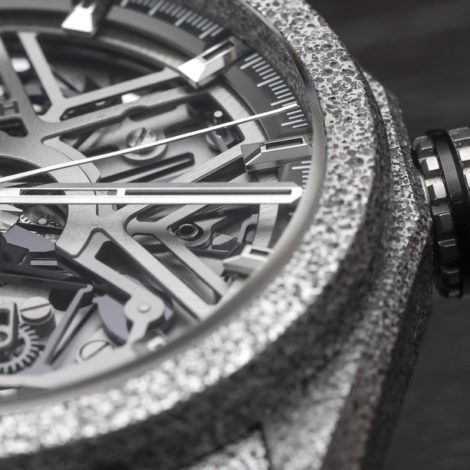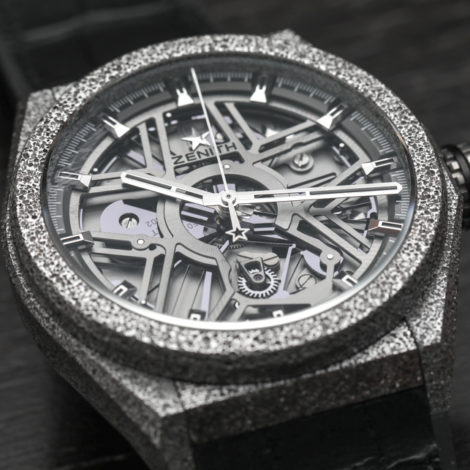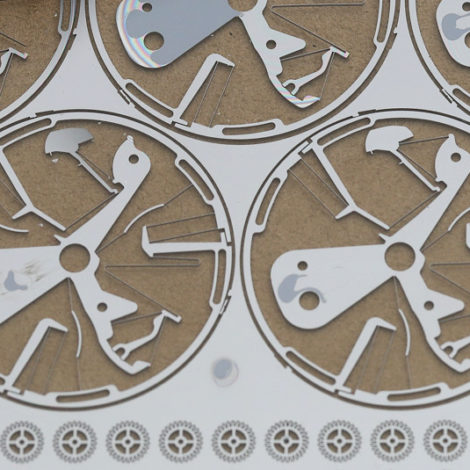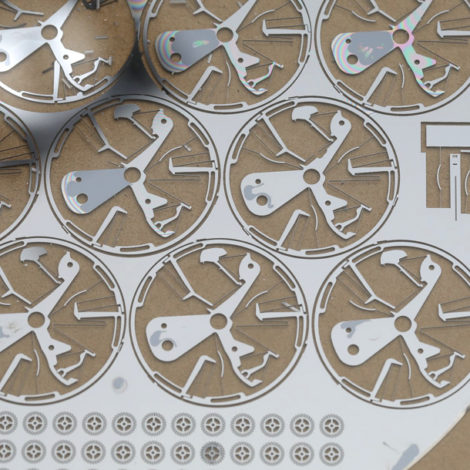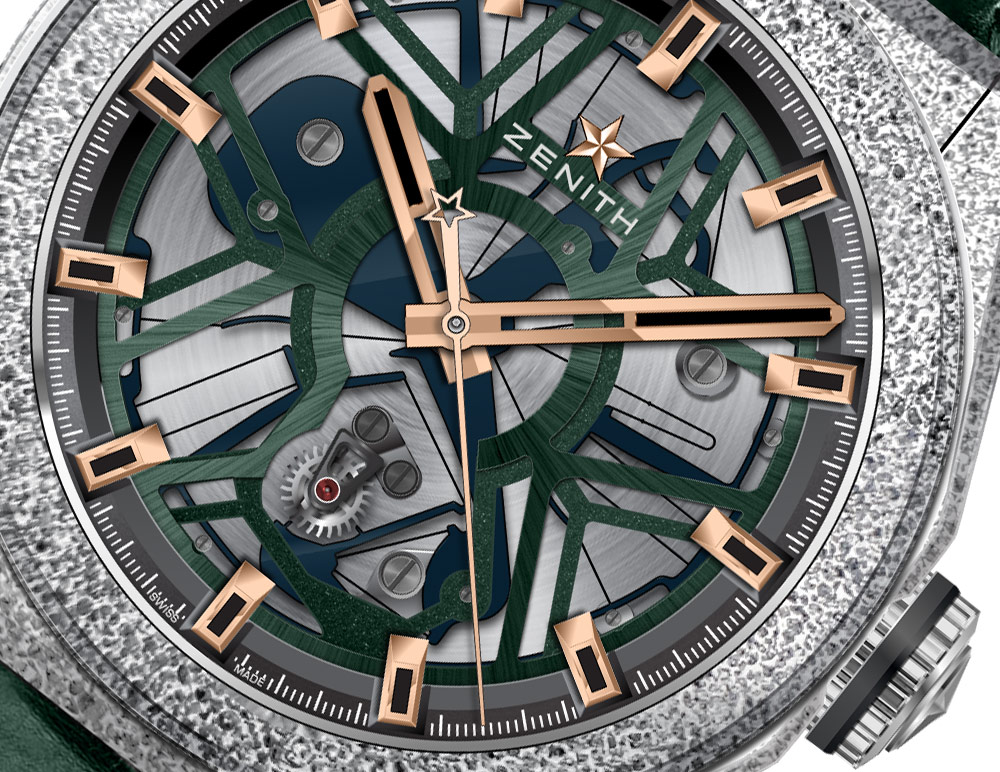
Current Zenith CEO Julien Tornare will have his hands full trying to juggle a brand that is both the maker of classic legends such as the El Primero, and emerging novelties which build on older technology such as the Defy El Primero 21 and the Defy Lab. These watches present traditional watch lovers with a tantalizing view of what can be available if you just let in what is new out there. Nevertheless, there will always be purists who want their watches as “old style” as can be. For everyone else, there are products like the Defy Lab. Personally, I see no reason why a well-rounded watch collection can’t have examples from both sides.
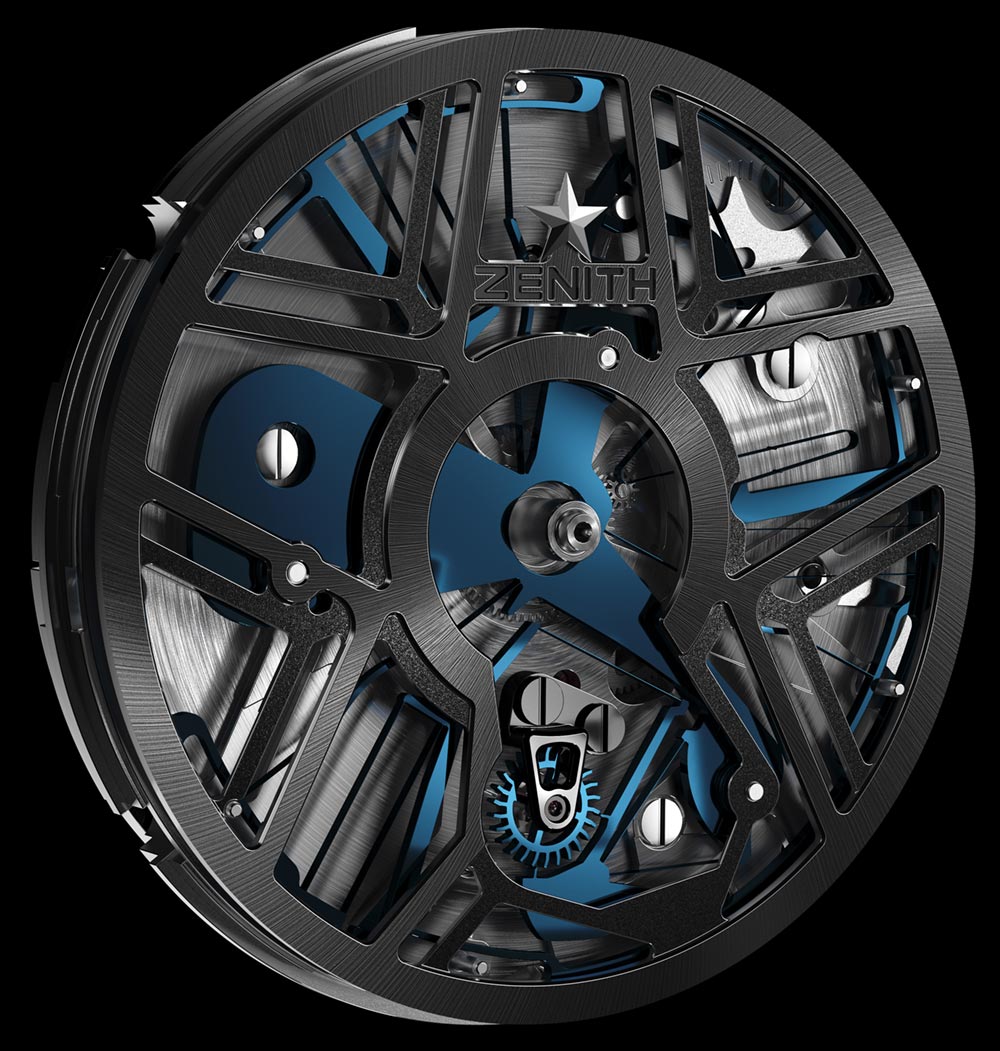
Much of the caliber ZO 342 is silicon, including the large monolithic regulation component. This large silicon part is a regulation system that is called the “Zenith Oscillator,” which is buzzing with cheerful enthusiasm behind the entirety of the main dial. It’s a thrilling and visceral view, unlike pretty much anything in the watch industry today.
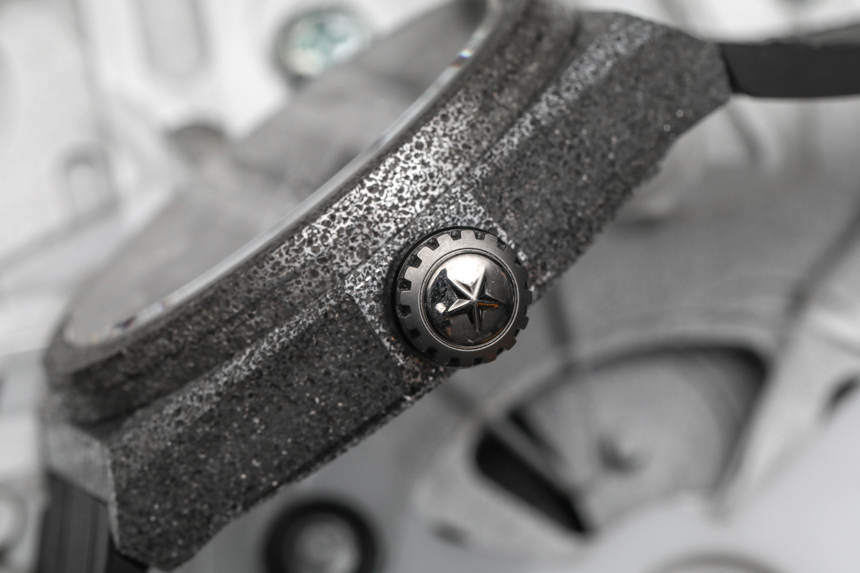
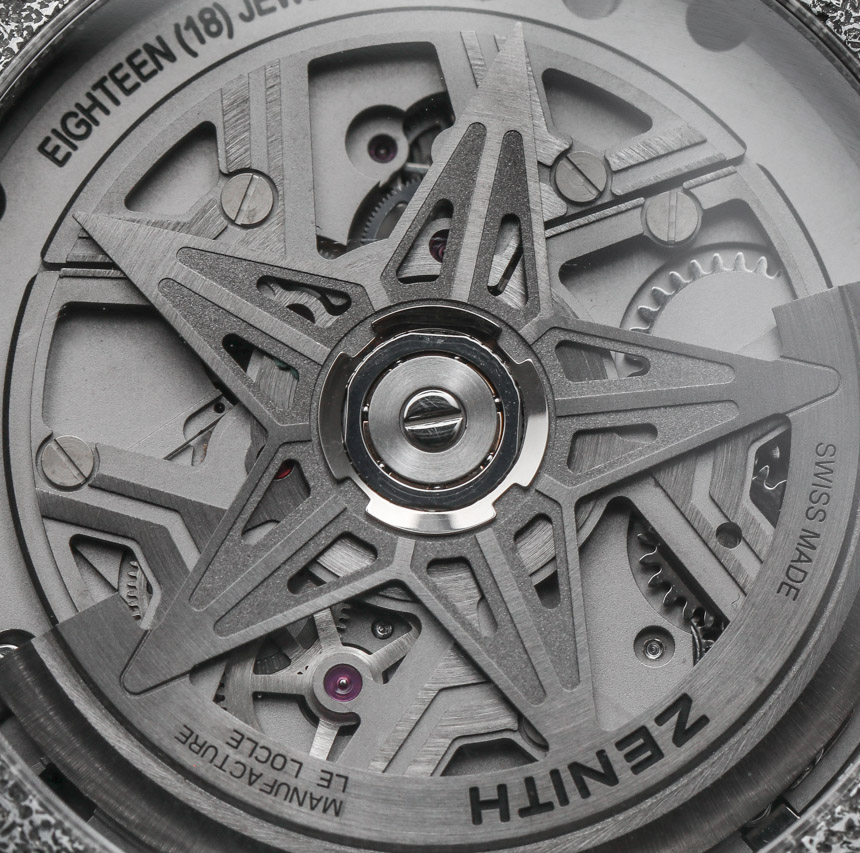
The movement is of course more or less fully exposed, and certainly cool looking with an emphasis on the Zenith five-pointed star shaped logo in the movement design itself. The movement has a full 60 hours of power reserve and again operates at 15Hz (108,000 bph). Power reserve is actually 72 hours, but at 60 hours the stable 0.3 – 0.5 seconds per day accuracy drops to 1 second per day. Amplitude is extremely slim with a movement arc of just plus or minus six degrees. The movement is on the thicker side at 8.13mm, but is also only produced out of 148 parts. The ZO 342 is of course an automatic (Côtes de Genève stripes decorate the rotor), and indicates just the time with minutes, hours, and seconds.
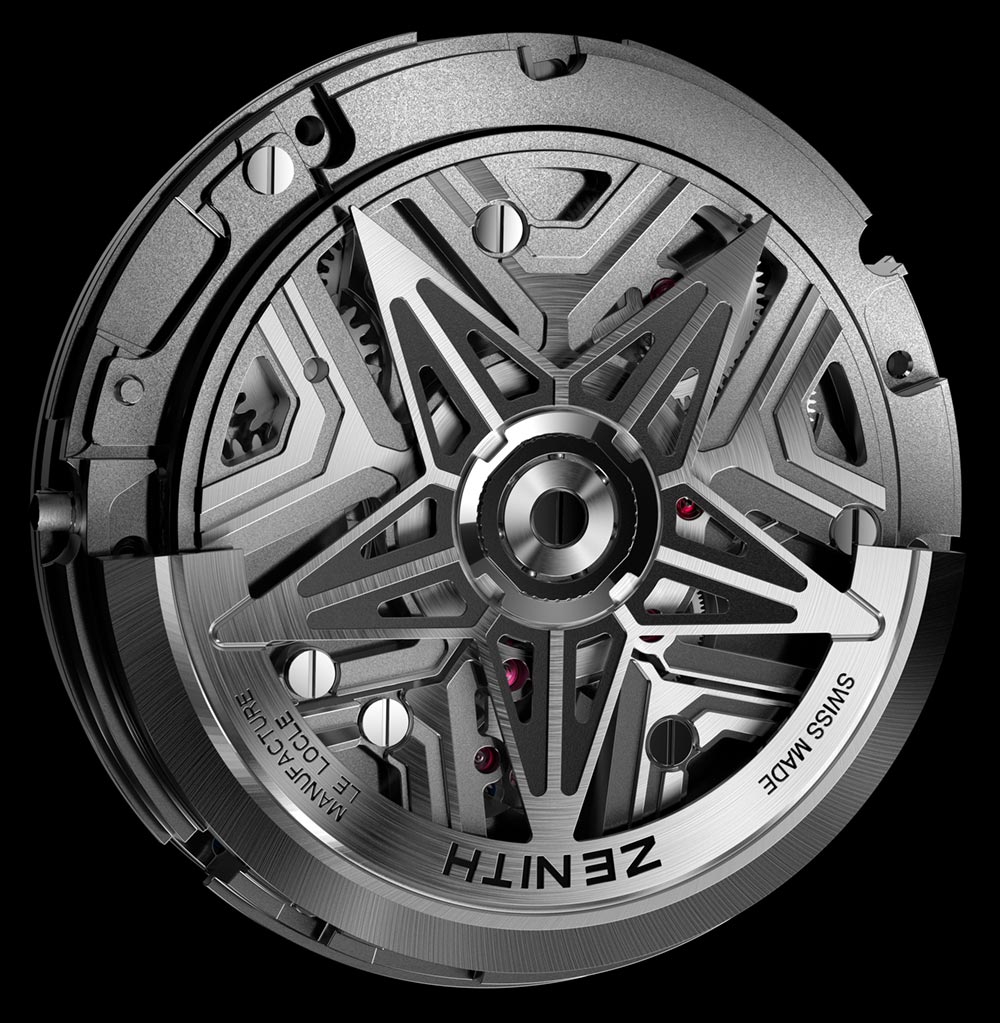
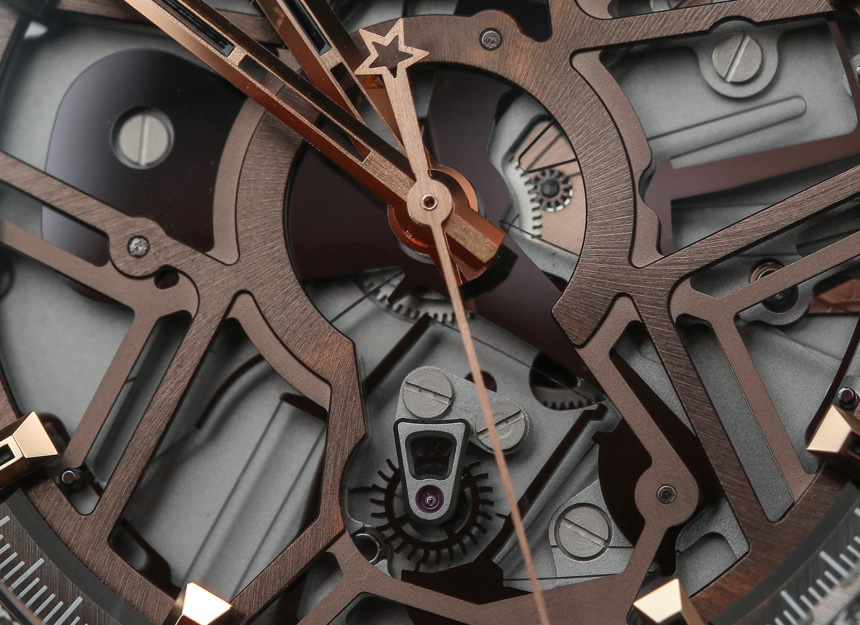
Theoretically speaking, all-silicon watch movements (we aren’t there yet) should be able to decrease the cost, while upgrading the performance of your standard mechanical watch. Though for now (and for a while), silicon will continue to be a more or less exotic material in the mechanical watch world that brands will ask customers to pay a bit of a premium for. So long as the products that contain such movements look like the Zenith Defy Lab, or other ultra-modern mechanical timepieces, I think customers will be willing.

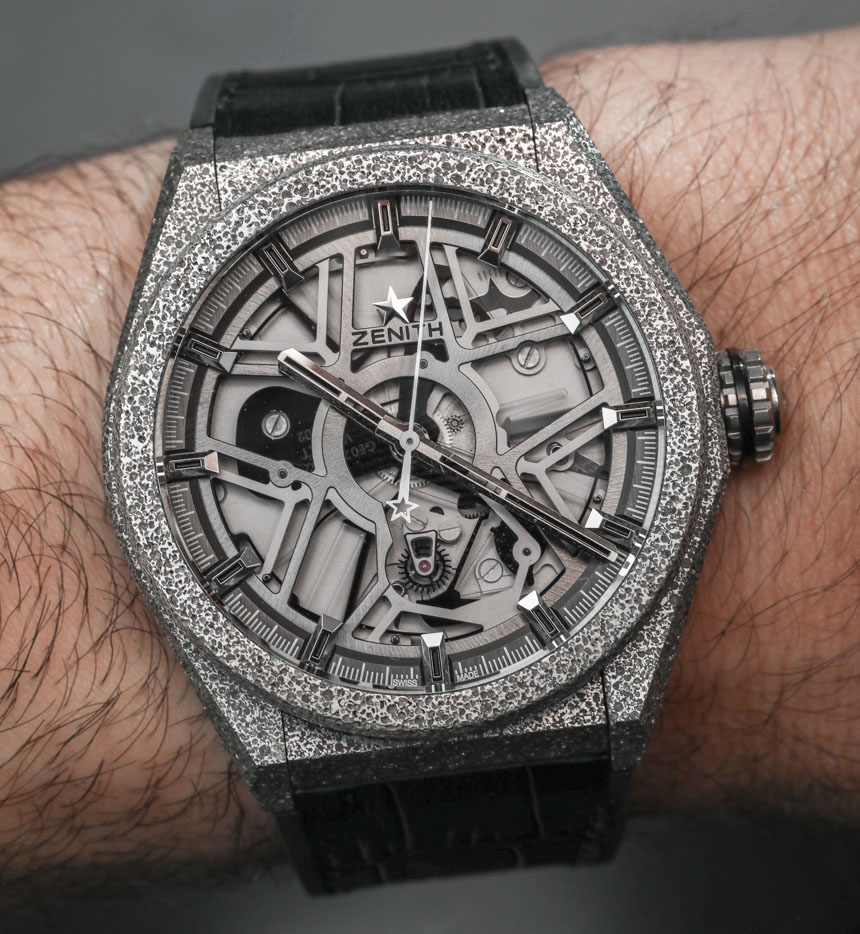
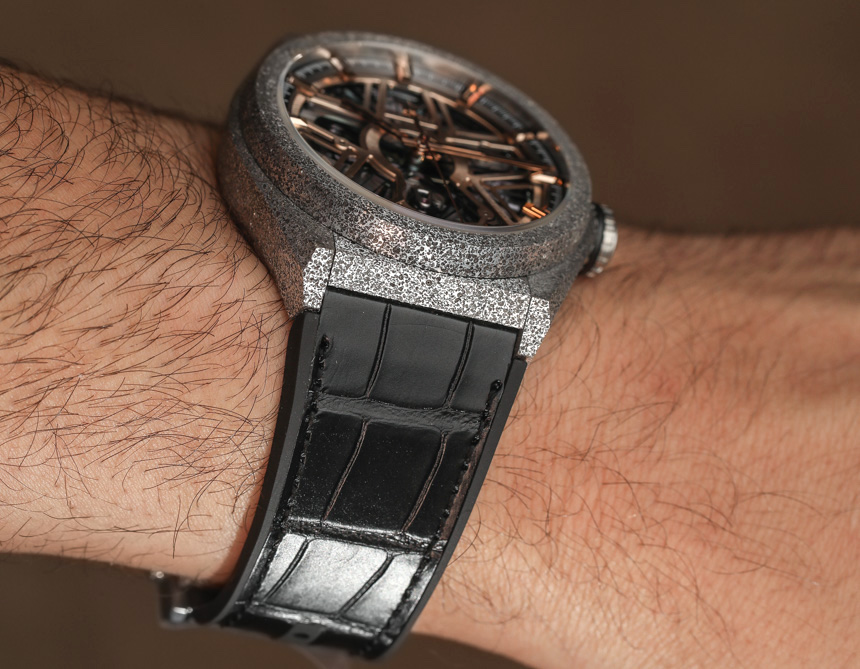
It is true that Zenith’s new Defy case feels a bit like that of the Hublot Big Bang. It isn’t a bad thing or an accident. Biver has long since found out that most new or younger watch lovers prefer something more bold, more edgy, more masculine, and certainly more visible than most vintage timepieces. For that reason, Zenith is smart to combine exciting technology with a spirited design. I can’t tell you how many times I’ve seen a watch brand debut a new movement or technical concept into a timepiece that looks like a boring dress watch. Are those conservative watch buyers the first ones to jump on something new? Heavens no. Another interesting conversation piece about the Defy Lab is how much of a showcase it is of Biver’s policy of “sharing” among the brands. The Zenith Defy Lab might be assembled at Zenith, but the case is made at (and developed by) Hublot, and the movement is produced (and developed) at TAG Heuer.


The first 10 pieces of the Zenith Defy Lab watch will come in a 44mm wide case produced from something else which is exotic known as “Aeronith.” Hublot invented it at part of their materials science division that came up with things such as red ceramic and magic gold. Aeronith (or “the Swiss cheese of aluminum” as you might call it) is actually produced at Hublot’s facility in Nyon. Aeronith is apparently similar to aluminum alloys used in the naval world because it is both strong and corrosion-resistant. Aluminum is rarely used in watches because it is relatively fragile – but in special forms can prove to be a useful material. In person, Aeronith certainly feels impressively light, and in a lot of ways has the visual appearance of concrete (in a cool way).
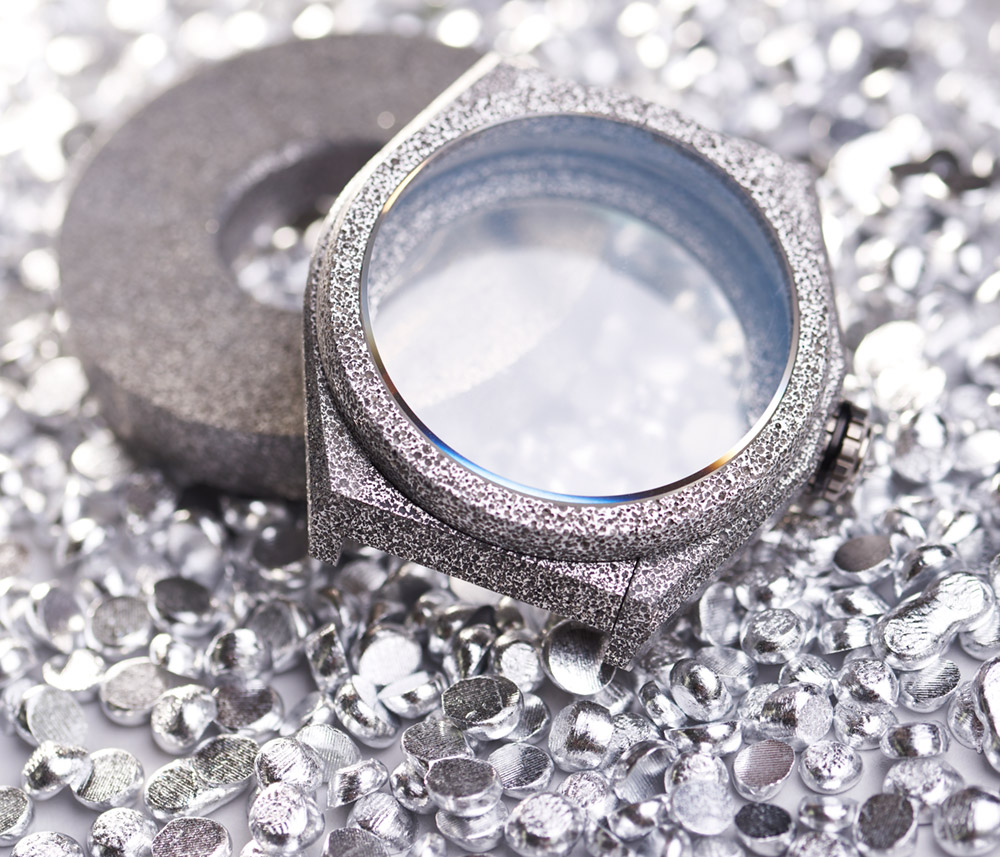

Aeronith is very light (2.7 times lighter than titanium, and 1.7 times lighter than standard aluminum) and also durable. The formation process (which is patented by Hublot) boils aluminum in some manner as to create air bubbles. When it dries, Aeronith takes on a foam-like texturing, and the pores are said to be filled in with a special polymer. I don’t know how much Aeronith will be used in future watch production, but I have a feeling Hublot and its sister brands will make use of the exotic material when they see fit – such as for these 10 unique watches. The issue is that each case is simply very time consuming to produce.
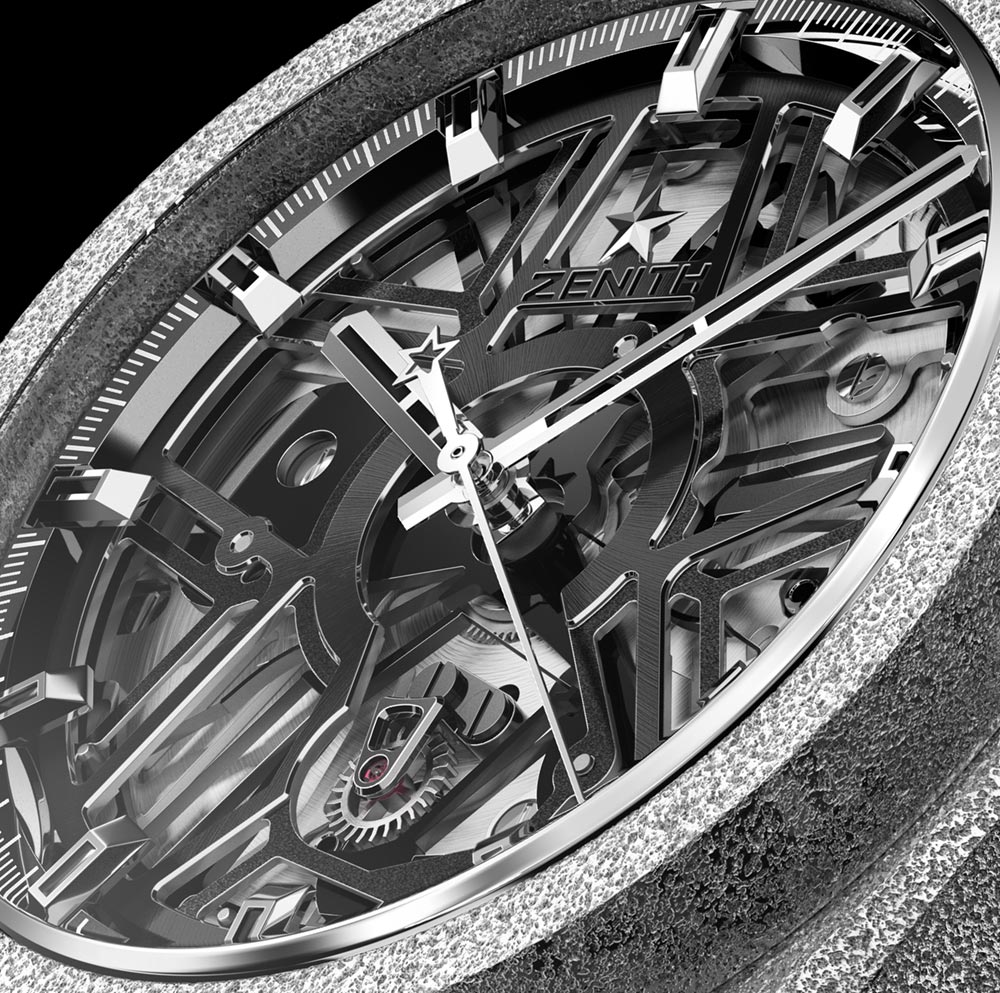
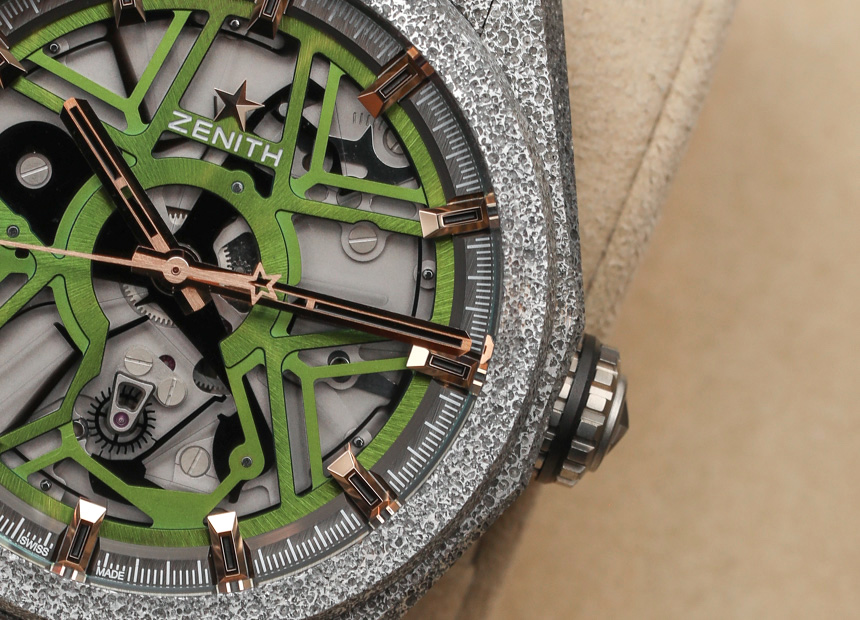
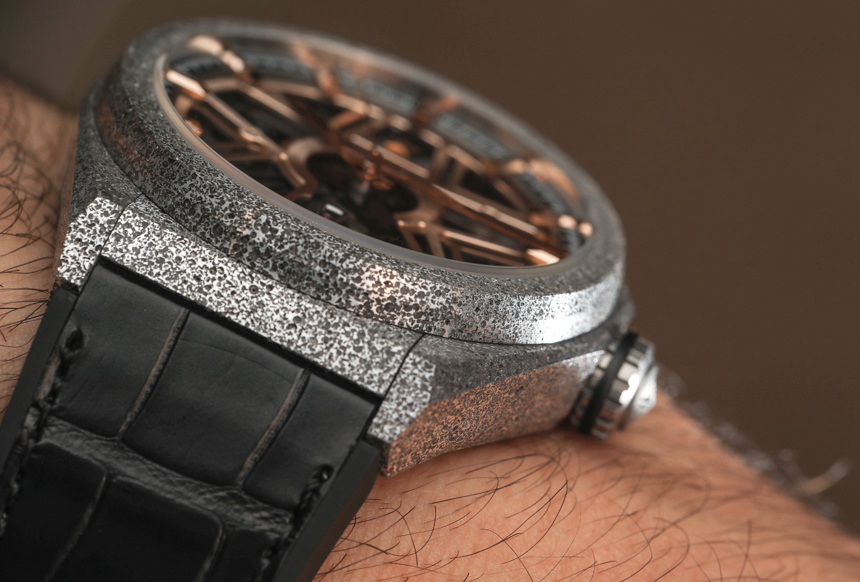
Each of the 10 debut Zenith Defy Lab watches has a slightly different look mixing silver and gold-toned hour markers and hands with different dial and strap colors. It feels a bit like Zenith’s prototype collection where they tested out what the production models might look like – but honestly each looks cool (I’m partial to the green). Buying one of these 10 pieces (which are all sold out) came with some special perks. Not only do you as a customer get to be at the launch event with us members of the watch media, but they also get to take a watch home with them. The buyers of each of these piece unique watches also get a Zenith manufacture visit, an “exceptional gift box,” (which I will admit is pretty nice) as well as rare bottles of Château d’Yquem Sauternes white wine.
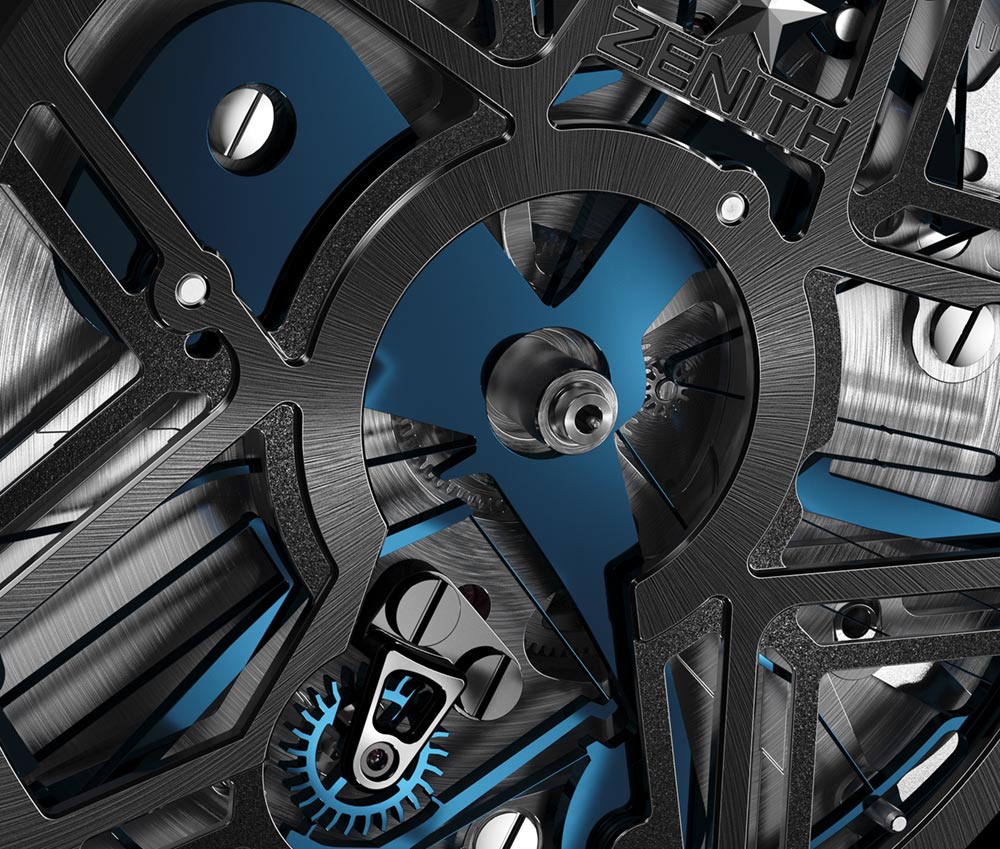
I’ve not talked about how 108,000 bph sounds yet. You can certainly hear it. The various pieces of the Aeronith-cased Defy Lab I had evaluated sounded just a little bit different. That tells me that as more watches have higher-frequency movements, more attention will need to be paid to case materials because of how sound waves leak out. Even minor differences in the cases (given the structure of foamy aluminum) changed the sound profiles from the 15Hz movements. It is a pleasant sound, but fast paced given its manic rapidity. The watch is also comfortable on the wrist – and looking at the dial with its ever-vibrating Zenith Oscillator offers a fun animation to watch when you want something to distract your eyes.
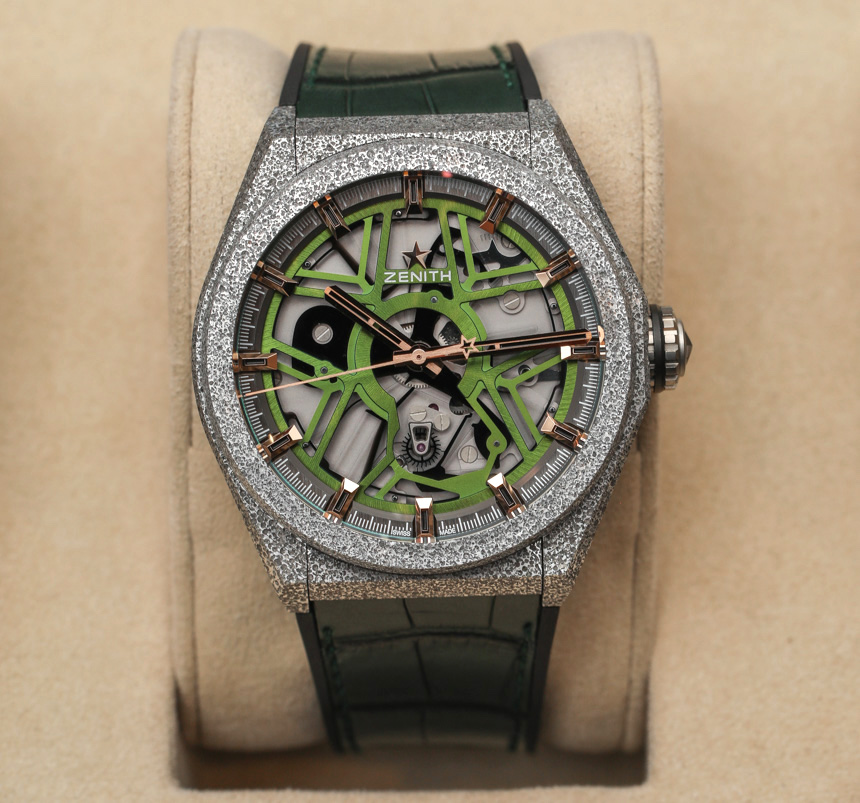
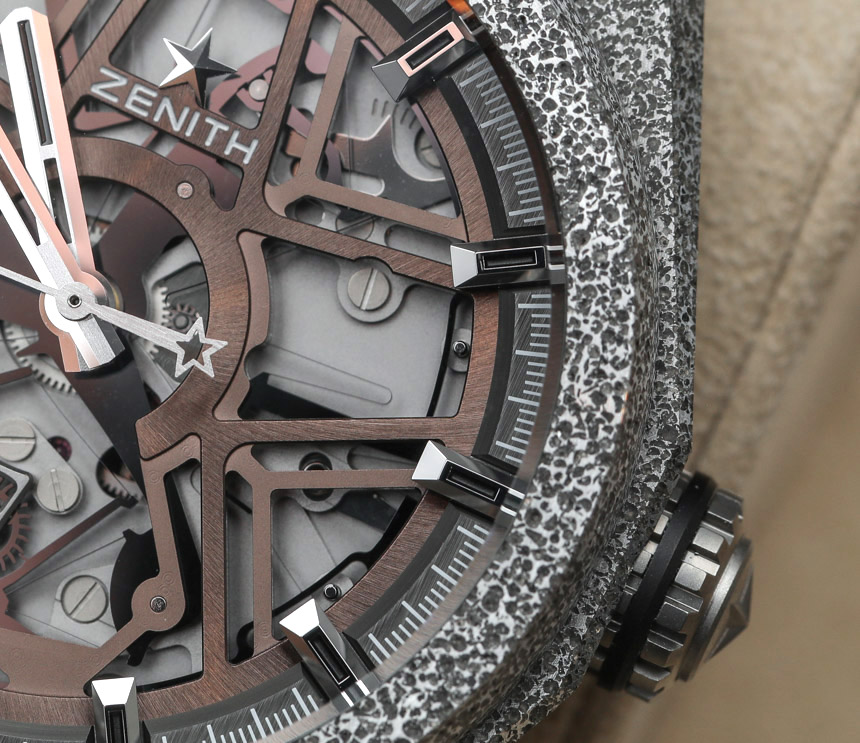
Upcoming models of the Zenith Defy Lab will maintain the same 44mm wide, 14.5mm thick case (water resistant to 50m), but I don’t think they will be in Aeronith. They will also cost much less than these more exclusive pieces. The watch community will be impressed with the relatively reasonable price, which I believe will be around 10,000 Swiss Francs. It is a cost that no longer requires watch lovers to consider between a new timepiece and a new car. The watch also allows watch addicts to have new conversations about accuracy and the performance of watch movements as being something worth caring about. For years mechanical watch lovers more or less convinced themselves that thinking about accuracy was sort of silly because your standard cheap quartz watch will most always best even an expensive mechanical watch when it comes to accuracy.
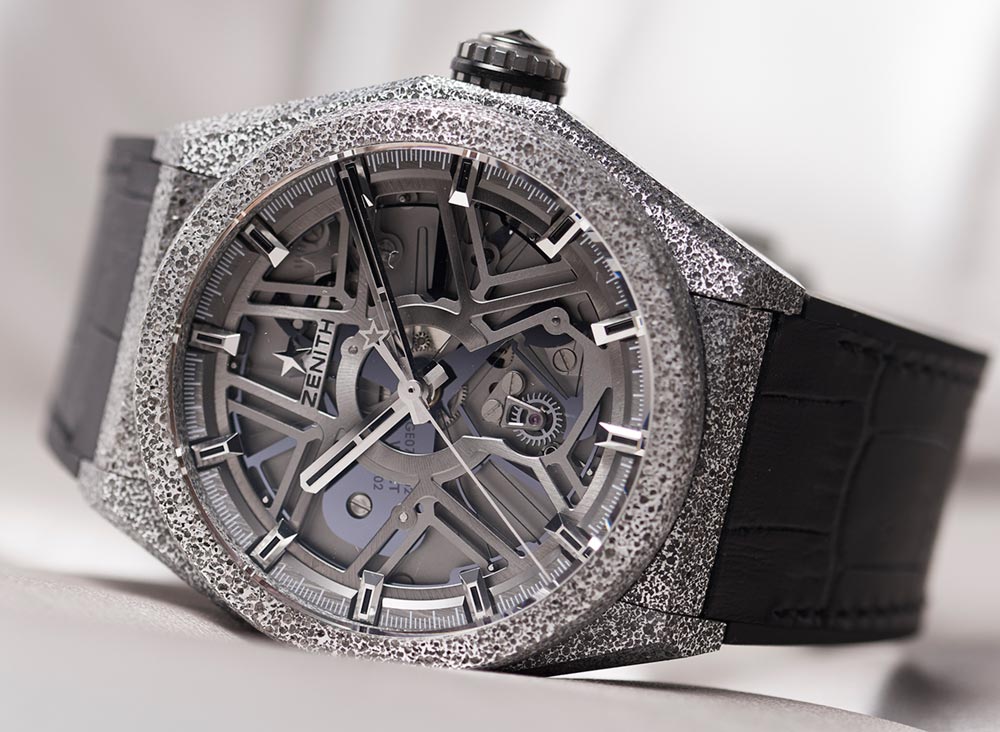
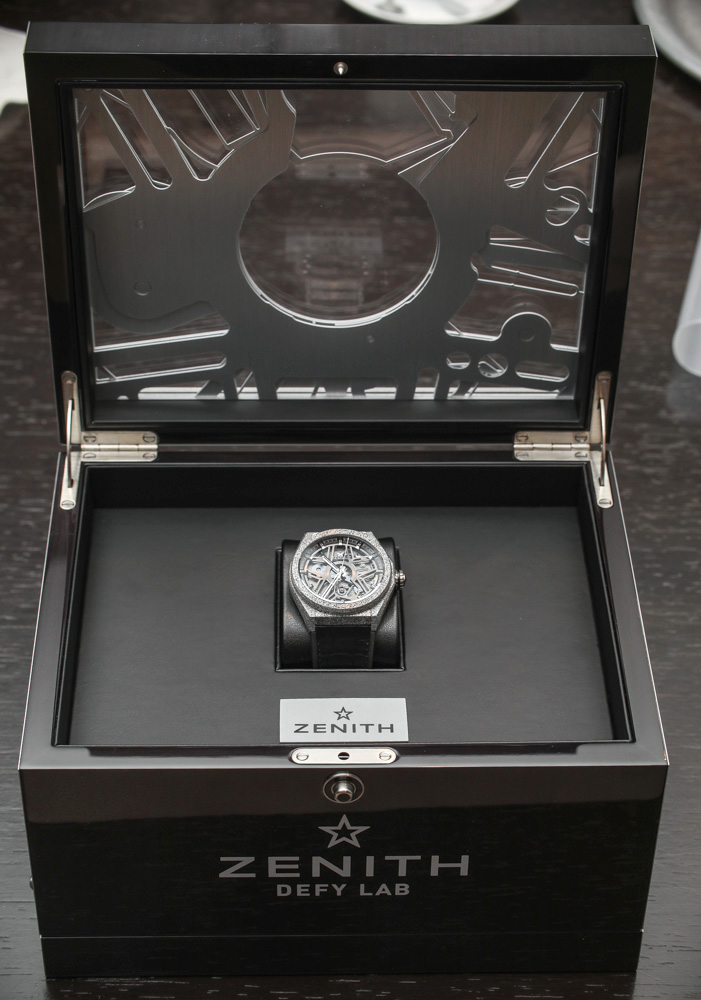
With that said, I am among a large population of mechanical watch lovers who do care about accuracy. That there is still development in the traditional watch industry to make systems that actually pioneer new achievements in accuracy will be something that pretty much any watch collector can stand behind. I know that not everyone will be a fan of the aesthetic design of the Defy Lab, or the Defy El Primero 21 for that matter, but I think they will want the technology for sure. Zenith and LVMH now take a leading role in the pursuit of accuracy, how will the others respond? Attached to the case of the Defy Lab is a rubber strap with an alligator exterior lining and a titanium buckle. Price for the 10 piece unique Zenith Defy Lab reference 27.9000.342/78.R582 is 29,900 CHF each. zenith-watches.com


